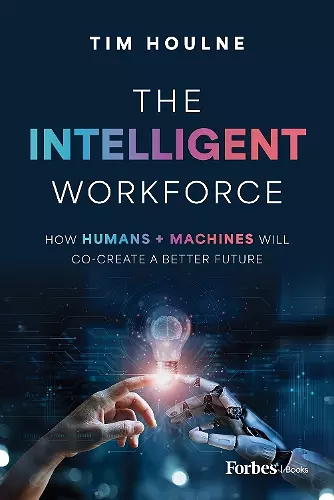The Intelligent Workforce
Format:Hardback
Publisher:Advantage Media Group
Published:17th Oct '24
Should be back in stock very soon

Over a decade ago, Tim Houlne wrote The New World of Work, suggesting that many businesses would shift from the cube to the cloud. Work wouldn’t just be conducted in the office, and employees could work remotely. While this declaration was met with much resistance, two years of the COVID-19 pandemic changed everything, and many more companies embraced the concept of remote work.
Today, Houlne believes we’re at another pivotal moment in history where work is about to change again. As Houlne shares in The Intelligent Workforce, we live in a world where everything is digital, and the lines between humans and machines continue to blur at an unfathomable rate. The new world of work has fundamentally shifted how businesses operate—providing employees with a real-time, constant stream of emails, messages, and digital communications.
Unfortunately, many executives are far behind the times. They think owning a smartphone or moving away from physical files to digital means they are current with technological trends. But entrepreneurs who plan to be in business for the long term must understand that the level of human and artificial intelligence interactions will increase at an even more rapid rate than digital transitions of the past. For managers, it is critical they adapt to this digital transformation and jobs reset. Work is changing, careers are shifting, and those long sought-after titles and levels of seniority once thought invaluable seemingly devalue by the day.
While many fear the future and see machines as a replacement for humanity, Houlne is more optimistic and sees an opportunity for humans and machines to co-create the future. As he details in The Intelligent Workforce, machines are precise while humans have intuition. Combined, these make a powerful combination. There will always be jobs that humans do better than machines and jobs that machines do better than humans.
Houlne believes that businesses that continue to invest in AI will accelerate and widen the gap between those that do not. He argues that for most organizations to survive in the coming decade, they must recognize the emerging patterns of the digital workforce, understand the impact these changes will have on their teams and customers, and then take proactive steps to work with rather than against these changes.
ISBN: 9798887501604
Dimensions: unknown
Weight: unknown
184 pages